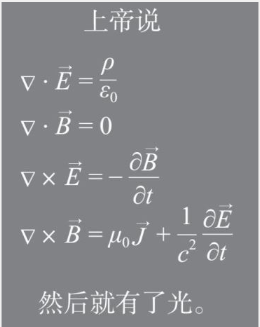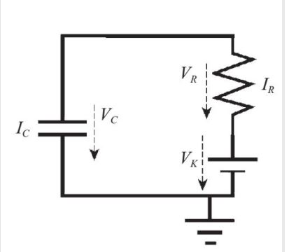
Before the 17th century, phenomena related to electricity (for example, magnetism, lightning, and fish that can discharge electricity) were scientific anecdotes. In the 18th century, Benjamin Franklin conducted extensive and systematic research on electricity for the first time, although there were other scientists who studied electricity before him. It is said that in an experiment conducted in 1752, Franklin used a kite to capture electricity from a storm.
Alessandro Volta invented the battery in 1800, after which many experiments can be done using electric current. Hans Christian Oster and Andre Marie Ampere discovered multiple properties of the relationship between electric current and magnetic field, but it was Michael Faraday who really made people understand electricity and turned electricity into a useful technology. Research results. Faraday conducted extensive research on the magnetic field around the current, laying the foundation for the concept of electromagnetic fields. He is familiar with basic circuit components such as resistors, capacitors and inductors, and has studied the working principles of circuits. He also invented the first electric motor and generator. The practical application of electrical technology in the 19th century is mainly due to his efforts. Faraday imagined that there is a certain field around electrical and magnetic devices (he called it electrotonic). Electromagnetic phenomena are caused by internal changes in this field.
However, Faraday had almost no formal mathematical training, so the task of establishing equations and using them to control the behavior of electromagnetic fields fell on James Clark Maxwell, and these equations are now named after him. From 1864 to 1865, Maxwell (learned about Faraday's research results) published his research results, pointing out that electric and magnetic fields are the basis of electricity and magnetism, and they can all propagate in space in the form of waves. In addition, he believes that light itself is an electromagnetic wave because it travels at the same speed as an electromagnetic field. The mathematical formulas of these results form a set of equations, which are one of the most famous and influential equations in the history of science.
When Maxwell first proposed this system of equations in The General Theory of Electromagnetism, it contained a total of 20 different equations. (Maxwell does not have modern mathematical tools, and we can use these tools to describe complex mathematical operations in simple forms.) At that time, only a few physicists and engineers could understand the full meaning of Maxwell’s equations, so they were influenced by many sciences. There was great suspicion in the world, including William Thomson (later Lord Kelvin). Many physicists are actively involved in the research and development of Maxwell's equations. The historian Bruce Hunter called them the "Maxwell School" in a book of the same name.
Soon, Oliver Heaviside understood the potential importance of Maxwell's equations. For most of his life, Heaviside devoted himself to reconstructing Maxwell's equations, eventually turning them into four equations familiar to physicists and engineers. We can see them on T-shirts and car bumpers, although most people don’t recognize them or forget their meaning. On Telegraph Avenue at the University of California, Berkeley, at the Massachusetts Institute of Technology and many other places, we can buy T-shirts with the pattern shown in Figure 3-1. These T-shirts can’t help but remind one of Ludwig Boltzmann’s question: "Are these symbols handwritten by God?" This sentence is quoted from Goethe’s "Faust." "These symbols" refer to Is the Maxwell equations.
Behind the beautiful and puzzling mathematical form of Maxwell's equations, hidden laws governing the behavior of electromagnetic fields. There are electromagnetic fields in almost every electrical or electronic device we use today. Maxwell’s equations describe the electric field ( EEE ) and magnetic field (BBB ) how they interact with each other, including charge density (ρ ρρ ) and current density (JJJ ) The relationship between other physical entities. Parametersε 0 ε_0e0And μ 0 μ_0μ0Are physical constants, called the permittivity and permeability of free space, respectively. Their relational equation is μ 0 ε 0 = 1 c 2 \displaystyle μ_0ε_0=\frac{1}{c^2}μ0e0=c21, Where ccc is the speed of light.

Figure 3-1 According to the reconstruction of Maxwell's equations and a popular T-shirt based on Oliver Heaviside, we can unlock the secret of the origin of the world
A field is a mathematical construction that assigns a specific value to each point in the space. For a scalar field, this value is a number; for a vector field, this value is a vector with direction and intensity. Electric, magnetic and gravitational fields are all vector fields, and each point in space is defined by their direction and amplitude. One of the reasons why Maxwell's equations are difficult to understand by contemporaries is that it is difficult for them to imagine or understand the field, and even more difficult to understand how field waves propagate in a vacuum.
The symbol "∇" is a mathematical operator, which has two different meanings. If the operator between it and the field is "·", then it represents the divergence of the field. Divergence refers to the volume density of the outward flux of a vector field in an arbitrarily small volume centered on a certain point. If the divergence of a point is positive, it means that there is an outward flux of the field. The divergence of the gravitational field is the mass, and the divergence of the electric field is the charge. The charge can be positive or negative, but there is no negative mass (at least we haven't found it yet). If a point has a positive charge, it will create an exit field; if there is a negative charge, it will create an incident field.
If the operator between ∇ and the field is "×", then it represents the rotation of the field, that is, the value of the rotation of the field at a specific point. Assuming that there is a small ball in the field to represent the movement of water and other fluids, the curl of the field can be regarded as a vector describing the nature of the rotation of the ball. This is because the velocity of the fluid flowing through each surface is slightly different. The curl is represented by a vector in the same direction as the rotation axis of the ball, and its length is proportional to the rotation speed.
The first equation in Maxwell's equations can be expressed as the total amount of electric field leaving a volume equal to the total amount of charge in that volume. This is a mathematical expression of the fact that the electric field is generated by charged particles.
The second equation states that the total amount of magnetic field leaving a volume must be equal to the total amount of magnetic field entering that volume. In this respect, electric and magnetic fields are different because electric fields are generated by charged particles, but there is no magnetic monopole that can generate magnetic fields. Therefore, the magnetic field is always a closed loop, and the total amount of magnetic field entering a certain volume must be equal to the total amount of magnetic field leaving the volume.
The third equation states that the potential difference accumulated around a closed loop, that is, the voltage difference, is equal to the time change of the magnetic flux passing through the closed area of the loop.
The fourth equation states that the current and electric field changes flowing through a certain area are proportional to the magnetic field distributed around that area.
Over time, people’s understanding of the relationship between electric and magnetic fields led to the development of electricity into the most useful technology in the 20th century. In 1888, Heinrich Hertz, who taught at the predecessor of Karlsruhe University in Germany, was the first to prove the existence of electromagnetic waves predicted by Maxwell through experiments, and that electromagnetic waves can be used to transmit information over long distances.
Now, we rely on electric motors and generators to drive electrical appliances, produce the consumer goods we buy, and process and preserve most of the food we eat. Televisions, telephones, and computers rely on electric and magnetic fields to send, receive, and store information. Many medical imaging technologies are also based on Maxwell's equations.
Electrical engineers and physicists use Maxwell's equations every day, although sometimes in different or simplified forms. With a simple example, we can vividly understand how Maxwell's equations define circuit behavior. Let us look at the third equation, which states that when the magnetic field passing through the enclosed area of the closed circuit does not change, the sum of the voltages measured around the circuit is zero. The circuit shown in Figure 3-2 includes a battery as a voltage source, a capacitor, and a resistor. The third equation can be used to obtain: VR + VK − VC = 0 V_R+V_K-V_C=0VR+VK−VC=0

Figure 3-2 A circuit composed of a capacitor, a resistor, and a voltage source
This expression is obtained by calculating the sum of the voltage drops around the circuit (current flowing in a clockwise direction). Voltage drop VC V_CVCNeed to add a negative sign because it is opposite to the current direction; voltage VK V_KVK(Battery voltage) and VR V_RVR(Resistance voltage) is in the same direction as the current. The result shows that through the capacitor IC I_CICCurrent and through resistance IR I_RIRThe currents are equal (in opposite directions), because all currents in this circuit will flow through the wires.
Maxwell’s fourth equation shows that the current through the capacitor is proportional to the rate of change of the electric field between the plates of the capacitor over time, and the expression IC = CV ˙ C I_C=C\dot V_CIC=CV˙C, This is because the electric field (in this case is) and the voltage difference between the capacitor plates VC V_CVCDirectly proportional. In this equation, VC V_CVCThe dot above indicates the rate of change of this quantity over time. Mathematically, it is called the derivative with respect to time, and it can also be expressed as d VC dt \displaystyle \frac{dV_C}{dt}dtdVC。
In 1827, another German physicist George Ohm described the current IR I_R in a resistorIRAnd voltage VR V_RVRThe linear relationship between. Ohm’s law states that according to the resistance RRThe value of R , there is a linear relationship between these two variablesVR = R ⋅ IR V_R=R\cdot I_RVR=R⋅IR. Putting these expressions together, we get − CV ˙ C = (VC − VK) R 0 \displaystyle -C\dot V_C=\frac{(V_C-V_K)){R_0}−CV˙C=R0( VC−VK)
This expression is the direct result of applying Maxwell’s equations and Ohm’s law. It is also a single unknown VC V_CVC(The voltage on the capacitor will change over time) differential equation. All other parameters in the expression are known fixed physical quantities. This type of differential equation establishes a connection between variables and their rate of change over time. The above differential equation can be solved analytically or numerically to obtain the rate of change of the voltage on the capacitor over time. Through similar analysis, we can deduce the behavior of complex circuits containing thousands or even millions of electronic components.
We now know that neurons in the brain use the electromagnetic field described by Maxwell's equations to perform their "magic". At present, fast computers simulate the human brain and circuits by solving Maxwell's equations.